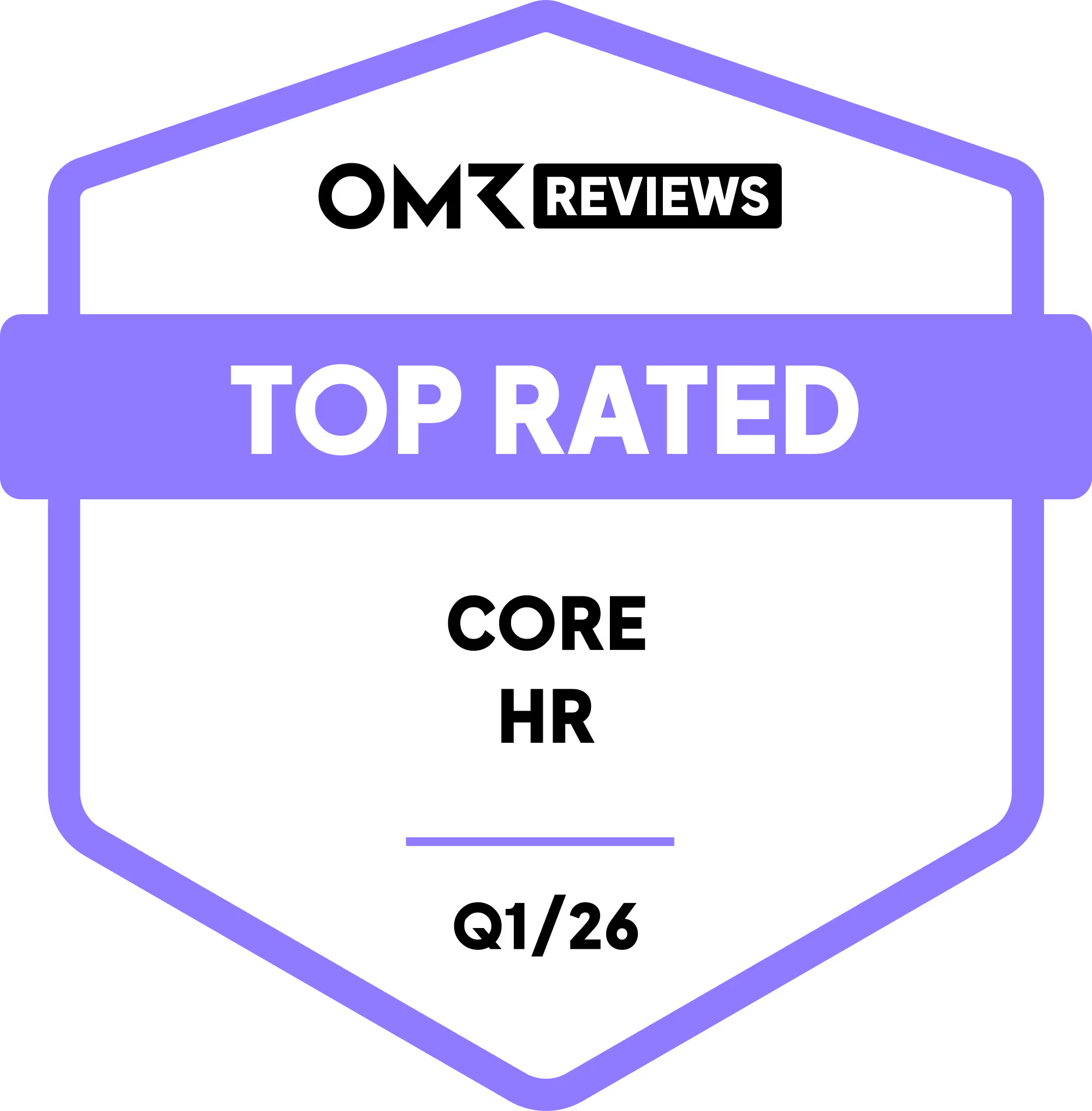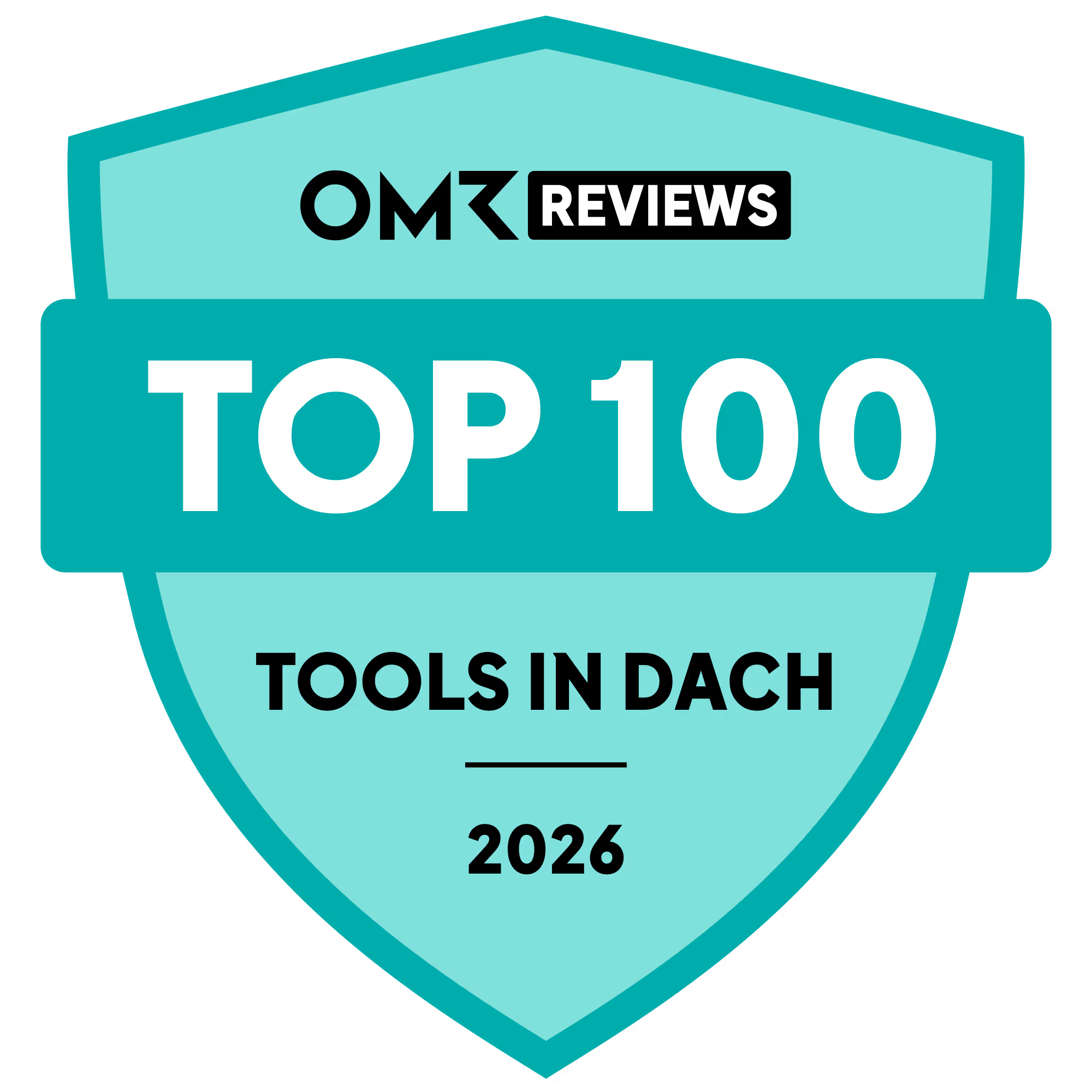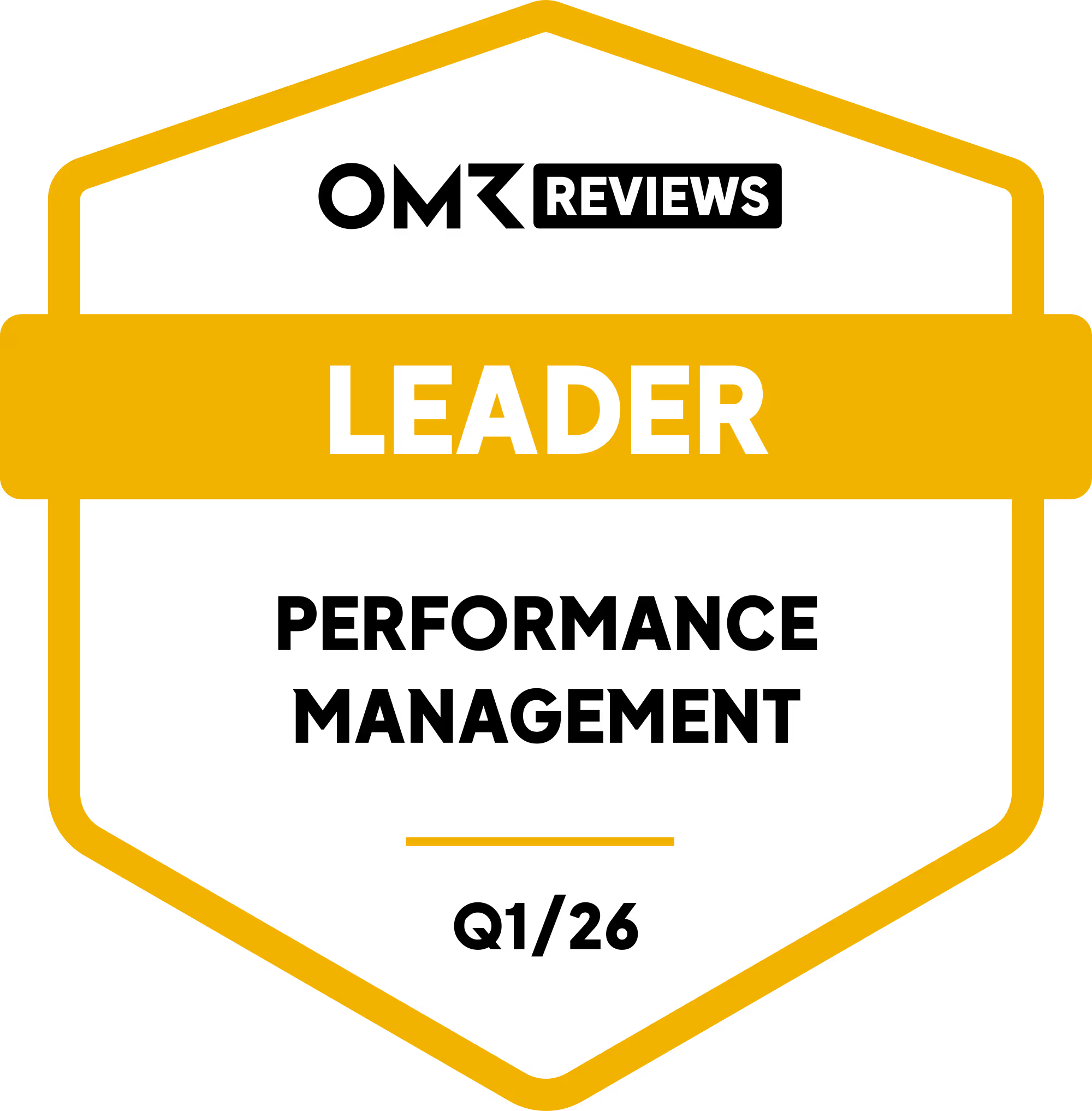Was ist ein HRIS und woher wissen Sie, dass Sie es richtig verwenden?

Ohne Personalinformationssysteme (HRIS) wären Unternehmen von heute nicht in der Lage, zu skalieren. Als Branchenführer erkannten, wie HRIS und einzigartige HR-Plattformen ihnen Stunden an Verwaltungsarbeit ersparen, ihnen helfen konnten, Kosten zu senken und das Engagement und die Leistung der Mitarbeiter zu steigern, begannen Unternehmen aller Größen und Branchen mit der Einführung von HR-Lösungen. Heute hat der HR-Technologiemarkt einen geschätzten Wert von 28,3 Millionen US-Dollar. (1)
Die schnelle Verbreitung von HR-Plattformen stellte jedoch eine weitere Hürde dar: Ausbreitung von HR-Software (2). Unternehmen verfügen am Ende über mehrere Plattformen (häufig mit sich überschneidenden Funktionen) oder mit funktionalen Lücken) und nutzen oft nicht alle ihre Vorteile. Tatsächlich geben nur 24% der HR-Experten an, dass ihre Teams den maximalen Nutzen aus ihrem HR-Tech-Stack ziehen. (3)
Jetzt, da sich viele Unternehmen in einer Ära der Kostensenkung befinden (4), suchen Personalleiter nach konsolidierteren Lösungen. Und wenn sie nicht schnell genug Alternativen finden, erwägen sie vielleicht sogar, diese zu eliminieren personenzentrierte Tools, die sich im Jahresvergleich positiv auf das Engagement, die Bindung und die Leistung der Mitarbeiter ausgewirkt haben — Kennzahlen, die für das Unternehmenswachstum unerlässlich sind.
Zum Glück gibt es im heutigen Kontext mehr All-in-One-HRIS-Plattformen, mit denen Sie die administrativen Aspekte der Personalabteilung optimieren und gleichzeitig die Mitarbeitererfahrung verbessern können. Aber was machen Personalinformationssysteme? Mit Hilfe von Experten definieren wir, was ein HRIS ist — und wie Sie feststellen können, ob Sie es richtig verwenden — in diesem Artikel.
- Markteinblicke in die Zukunft, 2024
- GARNELEN, 2024
- Gartner, 2024
- CNBC, 2024
🧨 Vereinfachen Sie Ihren Tech-Stack und Verbessern Sie Ihre Personalstrategien
Unterstützen Sie Ihre Mitarbeiter dabei, ihre Entwicklungsziele zu erreichen und sich erfüllt zu fühlen — mit einer optimierten, umfassenden HR-Plattform, die Ihre Personaldaten und -prozesse vereinheitlicht.
👉 Treten Sie der Warteliste bei
Was ist ein Personalinformationssystem?
Ein Personalinformationssystem (HRIS) ist eine Art von Software, die Unternehmen in der Regel verwenden, um:
- Mitarbeiterinformationen verwalten
- Halten Sie sich an die Arbeits- und Sicherheitsbestimmungen
- Automatisieren Sie Prozesse wie Leistungsverwaltung, Gehaltsabrechnung, Zeiterfassung und Schulung
Noch wichtiger ist, robuste HR-Informationssysteme kann analysieren Engagement, Performance, Schulung der Mitarbeiterund demografische Aufzeichnungen, sodass Führungskräfte und Personalmanager stärker datengestützte Personalstrategien entwickeln können.
Das übergeordnete Ziel des modernen HRIS ist verbessern Sie die Erfahrung der Mitarbeiter anstatt mehr bürokratischen Aufwand zu schaffen das schafft Barrieren zwischen der Führung und anderen Teammitgliedern.
Und was benötigen Teammitglieder neben einer benutzerfreundlichen HRIS-Oberfläche? Als Joris Luijke, Experte für Mitarbeitererfahrung, erklärte, Teammitglieder benötigen HR-Plattformen, die:
- „Mitarbeiterorientiert — Erstellen Sie intuitive und benutzerfreundliche Systeme, die in den Arbeitsablauf integriert sind. Verstehen und gestalten Sie unter Berücksichtigung der Mitarbeiterreise.
- Personalisiert — Benachrichtige jemanden nur, wenn es wirklich relevant für ihn ist. Bieten Sie Funktionen an, die auf individuelle Bedürfnisse zugeschnitten sind.
- Proaktiv — Verwenden Sie deterministische Systeme und KI, um die Bedürfnisse der Mitarbeiter vorherzusagen und darauf einzugehen und so das Erlebnis von gut zu außergewöhnlich zu machen.
- Nahtlos — Stellen Sie sicher, dass HR-Systeme in andere Technologien integriert sind oder diese nutzen, um ein kohärentes Ökosystem zu schaffen.“
Was machen Personalinformationssysteme?
Die heutigen HR-Informationssysteme können viel mehr als ihre Vorgänger, und sie entwickeln sich in eine Richtung, in der die Mitarbeiter stärker im Mittelpunkt stehen.
„In den 80er Jahren führten Systeme wie ADP und PeopleSoft das HRIS ein, um komplexe HR-Aufgaben im Zusammenhang mit Gehaltsabrechnung und Mitarbeiterakten besser verwalten zu können“, sagte Joris Luijke. „Sie wurden für die Personalabteilung (und das Finanzwesen) konzipiert, nicht für Mitarbeiter. Im Laufe der Zeit kamen HRIS-Plattformen um HRM-Module wie Leistungsmanagement und Personalbeschaffung hinzu.“
Heute spielt das HRIS eine strategischere Rolle für Manager und Organisationen. „HRIS-Plattformen werden nicht nur zur Erfassung von Arbeitszeiten und zur Gehaltsabrechnung verwendet. Diese Systeme helfen Führungskräften nun dabei, fundierte, datengestützte Entscheidungen zu treffen und ihre Teams einzubeziehen“, sagte der Senior People Ops Manager von Leapsome. Samantha Sterkenburg.
Schauen wir uns an, wie diese HRIS-Funktionen spezifische Geschäftsprobleme für Unternehmen heute lösen.
Informationsmanagement für Mitarbeiter
HRIS-Plattformen ermöglichen es Ihnen, wichtige Mitarbeiterinformationen an einem zentralen Ort hochzuladen, zu organisieren, zu optimieren und zu schützen: wie Name, Adresse, E-Mail-Adresse, Telefonnummer sowie relevante Steuer-, Sozialleistungs- und Zahlungsdaten. Mitarbeiterinformationssysteme sind angesichts der Globalisierung des Arbeitsplatzes und der Zunahme verteilter Teams noch nützlicher geworden.
Beispielsweise bieten viele HRIS-Datenbanken konfigurierbare Regeln, die es globalen Unternehmen ermöglichen, nahtlos und unter Einhaltung ihrer lokalen Vorschriften mit internationalen Mitarbeitern und freiberuflichen Auftragnehmern zusammenzuarbeiten.
Einarbeitung
Wenn Unternehmen schnell skalieren wollen, verwenden sie häufig ein HRIS-Managementsystem mit Onboarding-Funktionen, um den gesamten Prozess zu automatisieren, von der Einrichtung der Hardware bis hin zum Lesen und Signieren wichtiger Dokumente. Sie nutzen auch Onboarding-Tools, um den Mitarbeitern Schulungen und Aufgaben im eigenen Tempo zu ermöglichen, die sie erledigen müssen, um sich schnell und reibungslos an ihre neue Rolle anpassen zu können.
Schulung und Entwicklung

Personalinformationssysteme bieten möglicherweise auch Tools für Schulungen und Karriereentwicklung, mit denen Sie anpassbare Lernpfade für Teammitglieder im eigenen Tempo erstellen können.
Also, statt Outsourcing Entwicklung der Mitarbeiter Wenn Sie einen Experten beauftragen, die Teammitglieder persönlich zu schulen, können Sie multimediale Entwicklungserlebnisse gestalten, die wirklich fesselnd sind — mithilfe von Quizfragen, Videos, Reflexionsaufgaben und Gamification-Elementen.
😁 Eine HR-Plattform zur Verbesserung der Mitarbeitererfahrung
Mit leistungsstarken Modulen für Mitarbeiterentwicklung, Engagement und Leistungsmanagement macht Leapsome die Arbeit für alle erfüllender.
👉 Nehmen Sie sich fünf Minuten Zeit, um zu sehen, wie Leapsome für Sie arbeiten kann
Leistungsmanagement

Unternehmen wie Apple und Block haben hat ihren Leistungsüberprüfungsprozess angepasst für eine kontinuierliche „Leistungsförderung“, bei der die Entwicklung der Mitarbeiter an erster Stelle steht. Unternehmen versuchen zunehmend, diesen Ansatz für das Leistungsmanagement nachzuahmen.
Das ist einer der Gründe, warum wir immer mehr HRIS-Software sehen, mit der Sie das gesamte Leistungsmanagementsystem optimieren können. HR-Plattformen wie Leapsome ermöglichen es Ihnen beispielsweise, die verschiedenen beweglichen Teile des Leistungssteigerung Prozess — z. B. die gemeinsame Erarbeitung von Leistungszielen, die Planung von Besprechungen zur Karriereentwicklung und die Automatisierung regelmäßiger 360°-Reviews, um festzustellen, ob die Teammitglieder Unterstützung benötigen, um ihre Entwicklungsziele zu erreichen.
Verwaltung der Gehaltsabrechnung
Wenn Sie mit Steuerinformationen von Mitarbeitern umgehen und versuchen, Mitarbeiter in großem Umfang oder für ein globales Unternehmen korrekt und schnell zu bezahlen, Ein kleines Missgeschick könnte Sie mehr kosten als die Gehälter. Dies könnte sogar zu kostspieligen rechtlichen Komplikationen mit den lokalen Aufsichtsbehörden führen.
Mit einem HRIS-Gehaltsabrechnungstool können Unternehmen jedoch relevante Steuerdokumente speichern und Mitarbeiter von einer Plattform aus bezahlen. Teammitglieder können in der Regel mit ihrem HRIS-Gehaltsabrechnungssystem auch von überall auf ihre Gehaltsabrechnungen und Zahlungsinformationen zugreifen, um ihre eigenen Finanzen besser im Auge zu behalten.
Zeit und Anwesenheit
Es ist viel einfacher für Teammitglieder, Urlaub oder Krankheitstage zu nehmen, wenn es ein einfaches, standardisiertes Genehmigungsverfahren gibt, das jeder befolgen muss.
Aus diesem Grund verfügen viele HR-Informationssysteme über automatische Zeit- und Anwesenheitsfunktionen für die Beantragung und Genehmigung von bezahlter Freizeit (PTO). Außerdem laden sie diese Daten automatisch in einen zentralen Kalender hoch, sodass jeder nachverfolgen kann, wer im Büro ist und wer nicht. Und das Beste daran: So können HR-Teams und Manager leichter nachverfolgen, wie viele ihrer Mitarbeiter ihr PTO voll ausschöpfen und wen sie überprüfen müssen (um sicherzustellen, dass sie sich eine Auszeit von der Arbeit nehmen!).
Woher wissen Sie, dass Ihr Personalinformationssystem für Sie funktioniert?

Laut HR-Praktikern sollte ein HRIS den Mitarbeitern weniger und nicht mehr Arbeit bieten. „Sie wissen, dass Sie alles richtig gemacht haben, wenn jeder im Unternehmen mühelos im System navigieren und die benötigten Daten finden kann und wenn Arbeitsabläufe zunehmend automatisiert werden“, so Samantha Sterkenburg.
Der People-Ops-Experte räumt jedoch ein, dass Die Beschaffung und Implementierung des richtigen HRIS kann einige Zeit in Anspruch nehmen.
„Es gibt so viele Produkte da draußen, dass es überwältigend sein kann! Ich denke, ein Unternehmen muss wirklich zuerst sein Budget, seine Größe, seine Bürostandorte, den Umfang seiner geplanten Skalierung usw. verstehen.“ Samantha fügte hinzu. „Sobald Sie das Tool gefunden haben, das alle Kriterien erfüllt, erfordert die Implementierung viele benutzerdefinierte Konfigurationen und Tests [besonderer Schwerpunkt auf dem Testen], Schulung, solide Kommunikation und fortlaufender Support.“
Am wichtigsten ist, dass Ihr HRIS Ihnen helfen sollte Verbessern Sie das Engagement Ihrer Mitarbeiter und Leistungskennzahlen. Es mag zwar verlockend sein, bei der Rationalisierung Ihres HR-Tech-Stacks auf Leistungsmanagement- und Umfragefunktionen zu verzichten, aber Sie riskieren Schaden Erfahrung der Mitarbeiter auf lange Sicht.
„Das ist sicherlich enttäuschend“, sagte Samantha über Unternehmen, die Engagement-Tools und Performance-Tools aus Budgetgründen kürzen, auch wenn sich diese Lösungen Jahr für Jahr bewährt haben. „Engagierte und leistungsstarke Mitarbeiter sorgen dafür, dass ein Unternehmen vorankommt. Warum sollten Sie diese nicht behalten und nachverfolgen wollen Metriken?“
Was ist vor der Implementierung eines HRIS zu beachten
„Stellen Sie sicher, dass Sie Ihre Kernprozesse kennen und wissen, wie diese in einer idealen Welt ablaufen müssten, um alle Benutzer bestmöglich zu unterstützen, so viel wie möglich zu automatisieren und unnötige Aufgaben für alle Beteiligten zu reduzieren. Setzen Sie diese Idee als Maßstab für Ihre HRIS-Implementierung.“
— Personalpartner und Senior People Ops Manager von Leapsome Michele Severin darüber, wie Sie das richtige HRIS für Ihr Unternehmen auswählen
Wenn Sie Ihren HR-Tech-Stack zugunsten einer konsolidierten HRIS-Plattform mit mehreren Funktionen reduzieren möchten, sollten Sie unbedingt über Folgendes nachdenken:
- Ihre Ziele für den Einsatz eines HRIS — Was Ziele, sparen Sie nicht nur Zeit und Geld, sondern motivieren Sie auch, in ein HRIS zu investieren? Wenn Sie sich nicht sicher sind, ist es wahrscheinlich an der Zeit, eine schnelle Analyse des aktuellen Zustands durchzuführen, in der Sie Ihre aktuellen Personalstrategien und -verfahren überprüfen, um Bereiche zu identifizieren, in denen Verbesserungen möglich sind. Nutzen Sie diese Lücken als Grundlage für Ihren kurzfristigen Implementierungsplan.
- Ihr aktueller Prozess für interne Unternehmensführung — Laut Stacia Garr, Mitbegründerin und Hauptpersonalanalystin von RedThread Research, möchten Sie das Problem vermeiden Schatten-IT; Dies passiert, wenn jemand in Ihrem Unternehmen Softwarelösungen kauft, „ohne sich mit einer zentralen Stelle abzustimmen“. Anstatt ein striktes Genehmigungssystem zu schaffen, das Innovationen hemmen könnte, empfiehlt Garr „eine zweigleisige Strategie mit Pilotprojekten und Experimenten, wobei einige Technologien auf einer Spur sind, die dezentralisiert werden kann, und dann größere, verwaltete und zentral ausgerichtete Technologieinvestitionen, bei denen sich die Anwendungsfälle bewährt haben“.
- So belegen und verfolgen Sie den Return on Investment (ROI) — Abgesehen von der nachweisbaren Zeit und den Ressourcen, die Sie sparen, sollten Sie sich auch auf die Indikatoren konzentrieren, nach denen Sie suchen werden, um festzustellen, ob sich Ihr HRIS lohnt (z. B. Engagement und Leistung). “Wählen Sie ein paar KPIs oder wirkungsvolle Initiativen aus Ihren OKRs aus, die sich aus folgenden Gründen ergeben Ergebnisse der Umfrage zum Engagement und präsentieren ihren Erfolg „, schlug Michelle Severin, Senior People Ops Manager von Leapsome, vor.
„Im Laufe der Zeit können Sie den ROI anhand von Zahlen belegen, indem Sie sich die Engagement-Scores ansehen. Sie werden auch mehr darüber erfahren können, wer Ihre Leistungsträger sind und wer Ihre schwächsten Mitarbeiter sind. Betonen Sie also deren gesteigerte Produktivität oder die Zeitersparnis durch das Leistungsmanagement und wie viel Sie sparen, wenn Sie Leistungsträger an sich binden.“
✨ Vereinfachen Sie Ihren Auswahlprozess
Unsere kostenlose Checkliste kann Ihnen helfen, eine sichere, fundierte Entscheidung zu treffen, von der sowohl Ihr Unternehmen als auch Ihre Mitarbeiter profitieren.
👉 Laden Sie unsere HRIS-Anforderungscheckliste herunter
Erreichen Sie Ihre strategischen HR-Ziele in diesem Jahr mit Leapsome
.png)
Eine solide HRIS-Lösung kann Ihren Verwaltungsaufwand verringern und es Ihnen ermöglichen, alles, vom Onboarding bis zur Zeiterfassung, an einem Ort zu optimieren. Mit integrierten Gehaltsabrechnungs- und anderen Verwaltungstools können Sie sich auf HRIS-Plattformen aber auch darauf verlassen, dass Sie die lokalen Arbeits- und Steuervorschriften einhalten.
Wir wissen jedoch, dass Sie noch weitere strategische Ziele für Ihre Mitarbeiter haben, die über das Sparen von Zeit und Geld hinausgehen. Sie haben auch ehrgeizige Ziele für Mitarbeiterbindung und Mitarbeitererfahrung, die es zu erreichen gilt, und möchten die Arbeit für alle Teammitglieder angenehmer gestalten.
Leapsome kann helfen. Unsere ganzheitliche HR-Plattform zur Mitarbeiterförderung wird bald zu einer echten Komplettlösung das Personaldaten vereinheitlicht, Ihren Verwaltungsaufwand übernimmt und Ihren HR-Tech-Stack optimiert. Zusätzlich zu allen HRIS-Funktionen, die Sie benötigen, bietet Leapsome Tools für Zielsetzung, Leistungsmanagement, Umfragen zum Engagement, Lernen der Mitarbeiter, und mehr.
⚡ Steigern Sie den Erfolg Ihrer Mitarbeiter mit der richtigen Personalplattform
Leapsome hilft Ihnen dabei, ein kohärenteres und leistungsfähigeres Unternehmen mit KI-gestützten Tools für die Entwicklung und das Engagement der Teammitglieder aufzubauen.
👉 Eine Demo buchen
Häufig gestellte Fragen zu Personalinformationssystemen
Was ist der Unterschied zwischen einem HRIS, einem HRMS und einem HCM?
Ein Humankapitalmanagementsystem (HCM) — auch Humankapitalinformationssystem genannt — bietet in der Regel eine vollständige Palette von Personal- und Ausgabenmanagement-Tools wie Spesenverfolgung und Firmenkarten. Andererseits konzentriert sich ein HRIS traditionell auf das Informationsmanagement der Mitarbeiter. Ein Personalmanagementsystem (HRMS) ist in der Regel so konzipiert, dass es die Arbeitsabläufe im gesamten Mitarbeiterlebenszyklus für Rekrutierung, Onboarding und Entwicklung verwaltet.
Es ist jedoch wichtig zu beachten, dass es bei all diesen Plattformtypen häufig zu überschneidenden Funktionen kommt und wir beginnen, konsolidiertere Versionen auf dem Markt zu sehen.
Was sind die fünf verschiedenen Arten von Personalinformationssoftware
Die fünf Arten von HR-Software sind:
- Betriebsbereit, Unterstützung von HR-Teams bei Funktionen wie Einstellungen, Beförderungen, Übergängen und allgemeinem Talentmanagement.
- Strategisch, Konzentration auf Analyse-, Entscheidungs- und Zielsetzungsaufgaben.
- Taktisch, Bereitstellung von Daten zur Unterstützung bei Fragen zur Gesamteffizienz, Ressourcenzuweisung und Einhaltung von Vorschriften
- Eingeschränkt oder spezialisiert, zielt auf einen Bereich wie Gehaltsabrechnung oder Leistungsverwaltung ab
- Umfassend, als ein „All-in-One“ -Lösung, die eine Vielzahl von HR-Funktionen unterstützt
Sind Sie bereit, Ihre Strategie zur Mitarbeiterförderung zu verbessern?
your People operations?
Informieren Sie sich über unsere Leistungsbeurteilungen, Ziele und OKRs, Engagement-Umfragen, Onboarding und mehr.
.webp)
.webp)
 Fordern Sie noch heute eine Demo an
Fordern Sie noch heute eine Demo an








.webp)




























